Affordable Asia: An Exotic and Surprisingly Inexpensive Journey to Vietnam

The famous limestone rock formations in Halong Bay, Vietnam. Photo: Ho Ngoc Binh/Getty Images
Vietnam is known for its lush landscapes, vibrant culture and delicious Chinese- and French-influenced cuisine. Anthony Bourdain’s favourite country, it boasts more than 100 dining spots on the Michelin list, including numerous simple eateries and street food vendors. Easily traversed by inexpensive flights, trains and “luxury” buses, its cities, islands and coasts are also flush with lovely, inexpensive places to stay.
Hanoi vs. Ho Chi Mihn (Saigon)
With 5.2 million residents, Vietnam’s capital in the north is almost half the size of the country’s other best-known city, Ho Chi Minh — the southern metropolis that was renamed in 1954 to honour the local hero who ended seven decades of colonial rule. Now home to 9.3 million and the country’s tallest skyscrapers, Saigon, as it is still commonly referred to, offers the fast-paced modernity and towering cityscape of one of the biggest cities in Asia. Its trendy nightlife, luxury shopping malls and modern thoroughfares are a stark contrast to Hanoi, with its charming Old Quarter, French colonial architecture, local markets, narrow lanes, pagodas and pastoral lakes.
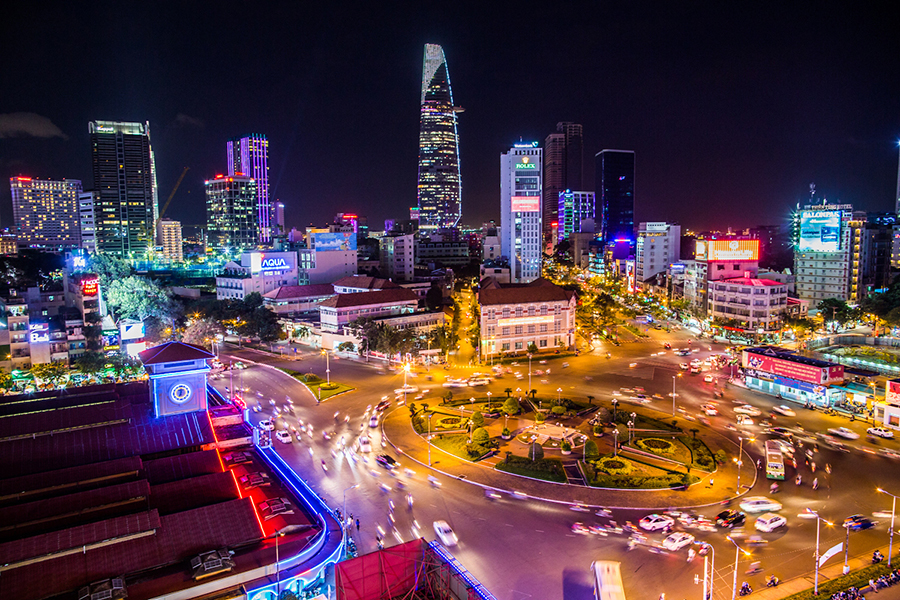
Travellers seeking a more traditional experience will enjoy the nation’s lower-key capital, which is also its foodie hub, street food to fine dining, and regarded as the cultural and creative capital of Vietnam. A centre for traditional art forms, from painting to lacquer, as well as the many historical sites of a 4,000-year-old city.
Spanning 36 streets (Jam Street, Sugar Street, Salt Street), the Old Quarter is the soul of Hanoi. Set between Hoan Kiem Lake (see below) and the Long Bien Bridge that connects the capital with the major port town of Haiphong across the Red River. Designed by the French in 1899, this impressive feat of cantilevered steel spanning 2,290 metres took 3,000 workers almost four years to build. A great spot for expansive views over Hanoi. Hanoi or Haiphong are perfect places to buy a beautiful, handmade model boat — the Vietnamese are famous for them. From classic schooners and retro cigarette boats to vintage yachts and passenger ships, they are high quality and intricately detailed, a lovely memento (or gift) that you’d pay hundreds more for at home. At the source, the price is about two-thirds less.
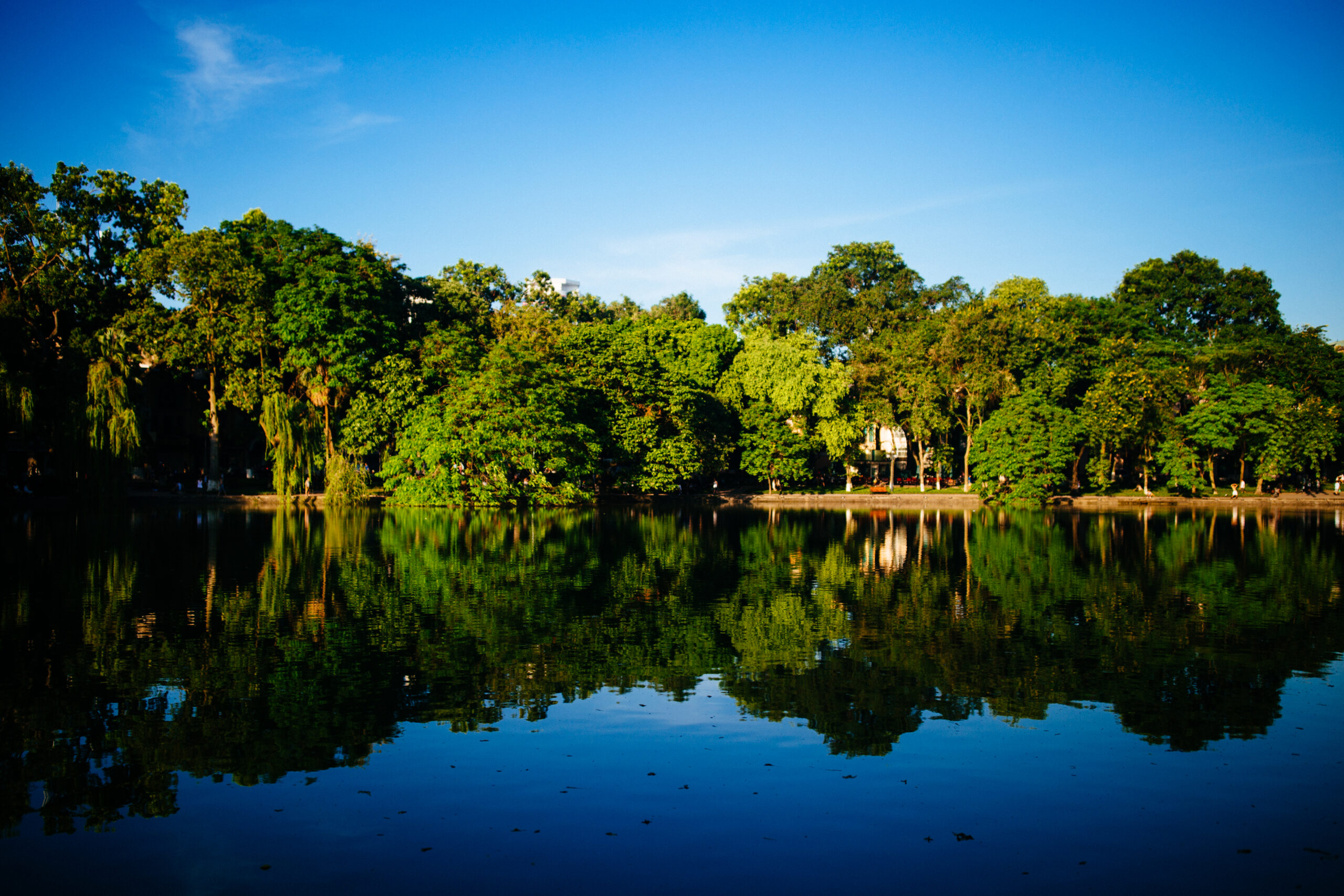
The French Quarter, on the southeast side of the lake, is poshest corner of town. Flush with pretty temples, well-preserved colonial buildings and grand embassies, this is where you’ll find the many of the city’s five-star hotels and elegant dining rooms, alongside stylish cafés, spas, galleries and boutiques, including Hanoi’s first and only luxury shopping centre, Trang Tien Plaza. Itssix floors were built in classic Parisian style with gilded interiors housing global brands, from Louboutin, Cartier, Bulgari, and Vuitton to Brooks Brothers and Levi’s.
This district is also home to museums and historical sites. The Vietnam National Museum of History houses thousands of ancient artifacts. The infamous Hoa Lo Prison, dubbed the ‘Hanoi Hilton’ by American POWs (including the late U.S. senator John McCain), is now open to the public. The Hanoi Opera House also hosts ballet and classical music. Here, you can enjoy a flawless performance of Giselle or a symphony of The Little Prince in an opulent, 19th century theatre for $30 to $50, instead of the $200 to $400 you’d spend in Canada. The 1887 St. Joseph’s Cathedral was among the first things the French colonists built, tearing down a sacred Buddhist pagoda to erect it. Known as the Big Church by locals, its Gothic Revival splendour is perfectly preserved, despite the ravages of two fierce wars. After touring its lavish interiors, you can grab a bite to eat from one of the many street food vendors preparing fresh dishes around the bustling church square.
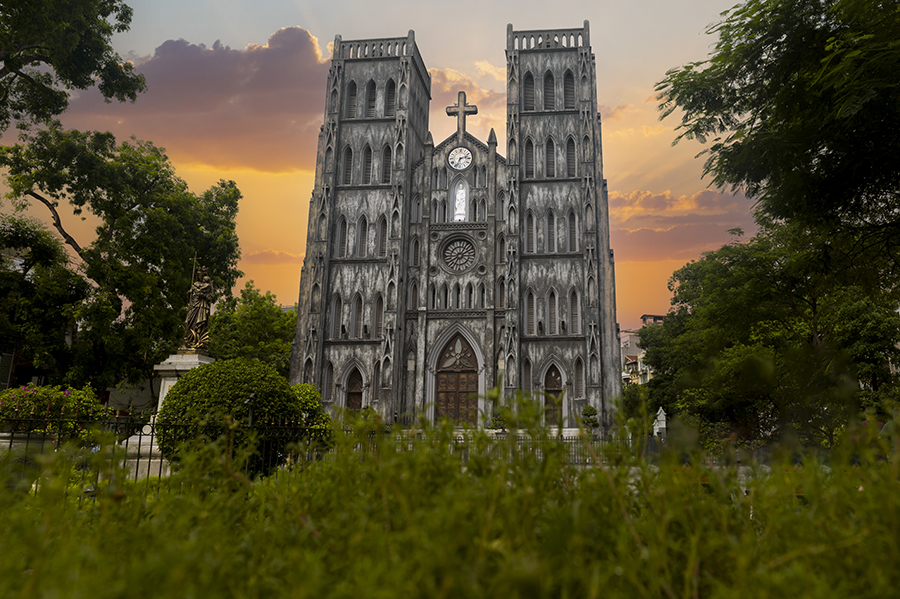
Speaking of food, you’ll want to book a food tour with a local gourmet ($37), especially in a renowned culinary capital like Hanoi. A city with a zillion places to eat delicious French- and Chinese-inflected Vietnamese cuisine, do this soon after you arrive to familiarize yourself with local dishes and cooking techniques. This way, you know what you like best and want to order when you’re on your own, from Bun Cha (grilled pork with vermicelli) to Banh Mi (baguette stuffed with egg, grilled pork or beef, tomatoes, carrots, cucumbers and herbs). Your guide can also furnish you with an insider list of great spots for meals — from splurge to cheap eats. Vietnam also boasts 103 eateries on the Michelin list that include street food vendors and simple eateries along with high end dining rooms.
Both of these areas are off the city’s idyllic freshwater lake, Hoan Kiem, also known as Turtle Lake, for its gigantic, now-extinct Hoan Kiem turtles (as big as 200 kg and two metres long), and Sword Lake, for an ancient myth involving the Golden Turtle God, a 15th century emperor, and a mystical blade. A famous fable that children learn in school, the picturesque temple, Turtle Tower — a landmark erected in 1886 — is perched on one of the lake’s islets. On another tiny island, the 18th century Ngoc Son Temple (Temple of the Jade Mountain) is accessed by the Huc Bridge, a bright red wooden walkway that arcs gently from the shore and is a symbol of classical Buddhist architecture.
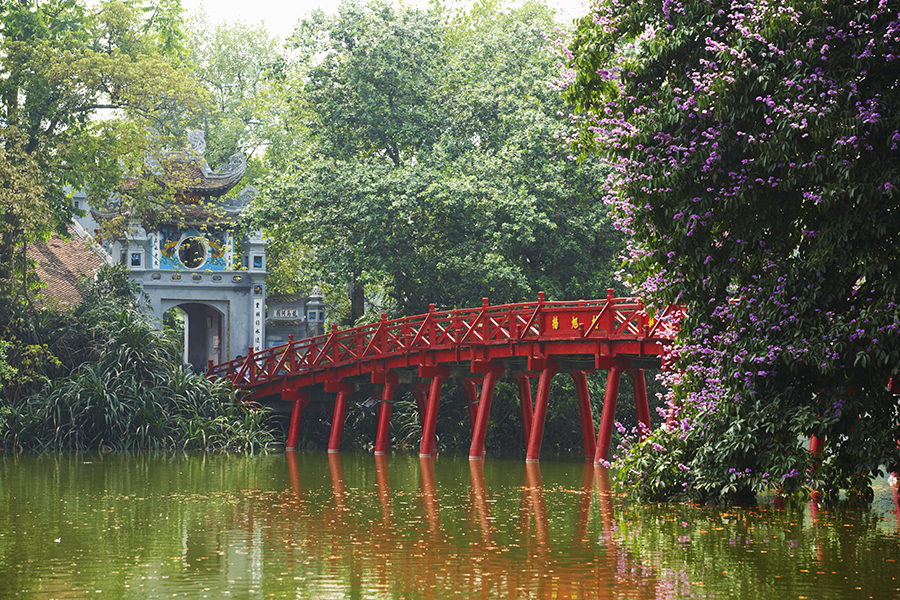
These two districts, the city’s most charming, are the areas to stay in. The French Quarter is quieter and more high-end, with fancier dining options, less traffic and crowds, and wider boulevards. The Old Quarter, with its crowds and traffic, lively markets, inexpensive, traditional food vendors and shopfront massage parlours, offer a more bustling Asian vibe.
These lakeside neighbourhoods are adjacent, a 10-minute stroll from the centre of one to the heart of the other. On a budget, you’ll definitely book a much nicer place for less cash in the Old Quarter. Terrific Airbnb’s are plentiful. This wonderful flat is an unbelievable $63 a night. This cool place is $40. As is this artsy duplex. NYNA House offers a slew of stylishly designed, kitchen-equipped apartments bookable on Airbnb, Booking.com, and Agoda.com, from $75. If you want a small, modern hotel with all the big conveniences — breakfast included, fitness room, rooftop pool, room service, concierge, airport transfers — the Soleil Boutique Hotel costs as little as $105 a night and the MK Premier Boutique Hotel is yours for $85. The five-star Grand Hotel du Lac is just that and offers a lot of luxe for $150. Looking to spend a third of that? The cheap and cheerful Maison d’Orient at the end of a quiet laneway gets all the TripAdvisor love from repeat customers for $40. If you want to stay in the French Quarter, on a budget, the new Hotel De Rond, a five minute walk from the Opera House, is a surprising bargain at $85 to $150 a night and this charming two-bedroom flat is a shocking $65.
From Hanoi, you can make a side trip to Halong Bay, a UNESCO World Heritage Site where you’ll see stunning limestone mountains rising up from the sea in a maze of some 755 islands. It’s 2.5 hours by car, the daily train leaves at 5:00 a.m. and takes a very scenic seven hours through the countryside, stopping along the way and arriving at noon. Modern, air-conditioned buses take half as long. The quickest route is via seaplane, 45 minutes with lovely views over the coast and islands, $200 to $400, depending on the season. You can book a short, inexpensive cruise for less than $300 per person to explore the famous rock islands offshore.
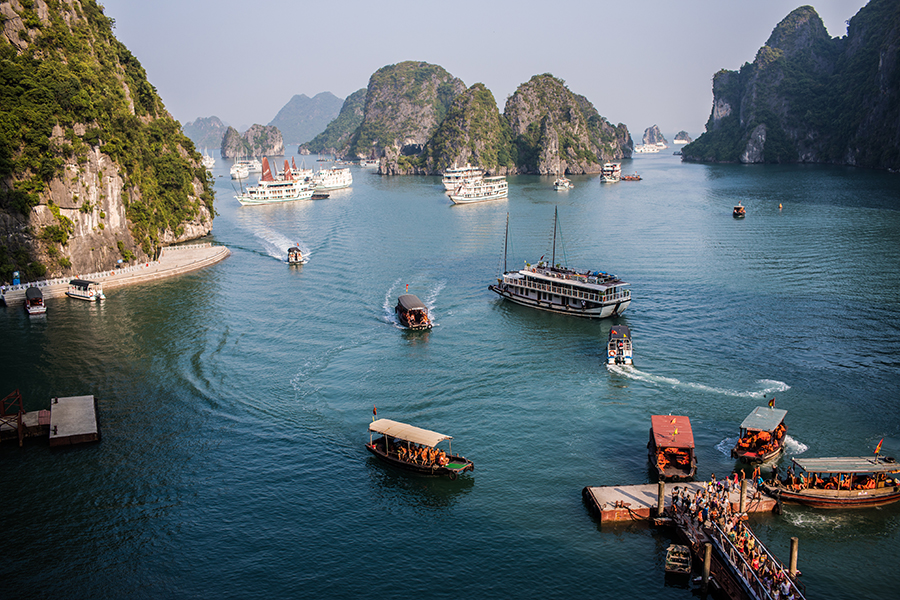
It’s a big jump south from Halong to Hoi An, a beautifully preserved small city on the south coast, 925 km away, there are no direct trains and it’s 17 hours by vehicle. Head for Haiphong, 60 km away, and book a one-hour direct ($100) to Da Nang Airport, which is 30 km from Hoi An on the south coast. Arrive early and spend a few hours in Haiphong, also called the City of Flame Flowers because its streets are lined in these bright red flowering trees. A proper city, (pop. 2.2 million), older neighbourhoods of this leafy port are home to landmark sites from a neoclassical Opera House and French colonial architecture to impressive 19th century cathedrals and ornate Buddhist temples. Waterfront is a terrific place for a seafood lunch before your flight to Hoi An.
Big Town: Hoi An IG
With a name that translates as peaceful meeting place, just more than 120,000 people live in this seaside hamlet. A UNESCO World Heritage Site along the legendary silk and spice route, this beautifully preserved Southeast Asian trading port is renowned for 15th to 19th century architecture influenced by the Japanese, Chinese and Europeans who passed through. Postcard pretty and pedestrian friendly, the cobblestone streets of Hoi An’s historic centre, Ancient Town, are lined in painted yellow shopfronts strung with the traditional lanterns that it’s famed for producing. A lantern festival is held on the night of the full moon, every month, and you should definitely try to plan your visit to include this stunning display. Traced by canals, you can also tour Hoi An along its waterways or explore the Coconut Forest and Thu Bon river on one of the region’s signature Basket Boats, circular vessels fashioned out of bamboo.
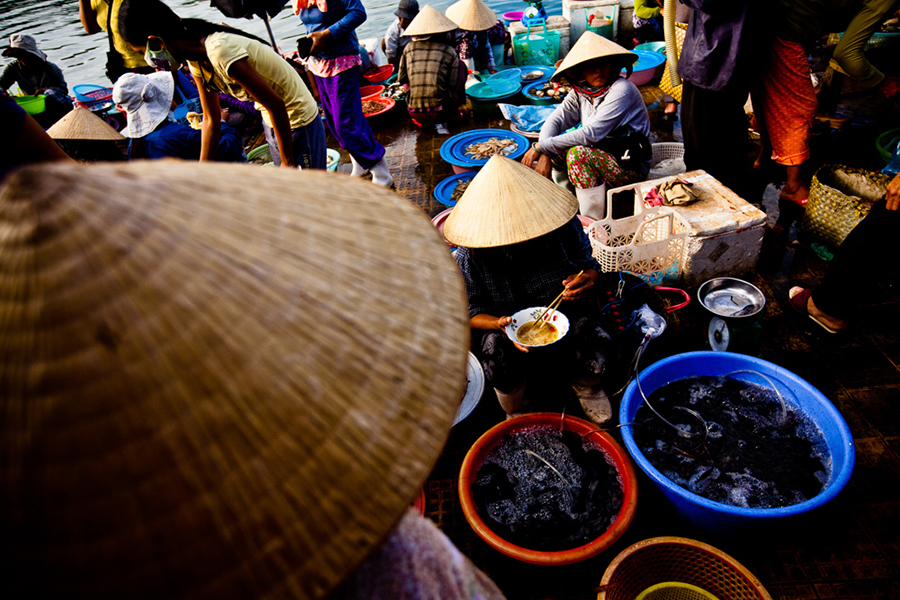
Hoi An is also a great place to buy fabric, particularly silk, and have clothes custom made. The Hội An Cloth Market houses more than 50 fabric stalls piled high with fabrics of all kinds. Or you can go directly to one of the town’s many tailors, where the fabric is included in the price so you don’t have to haggle.
Follow in Anthony Bourdain’s dining footsteps — he highlighted these three places as his favourites in Hoi An — and you must try the famous culinary specialty — Cao Lau. A chewy rice noodle unique to Hoi An that can only be made with water from the town’s 10th century Ba Le well. Served with marinated pork, greens, sprouts, herbs and broth, you can find it in restaurants but ordering from one of the many vendors along the riverfront is dinner with a great view. And you can always book a local food guide ($38) for more street food forays and insider tips.
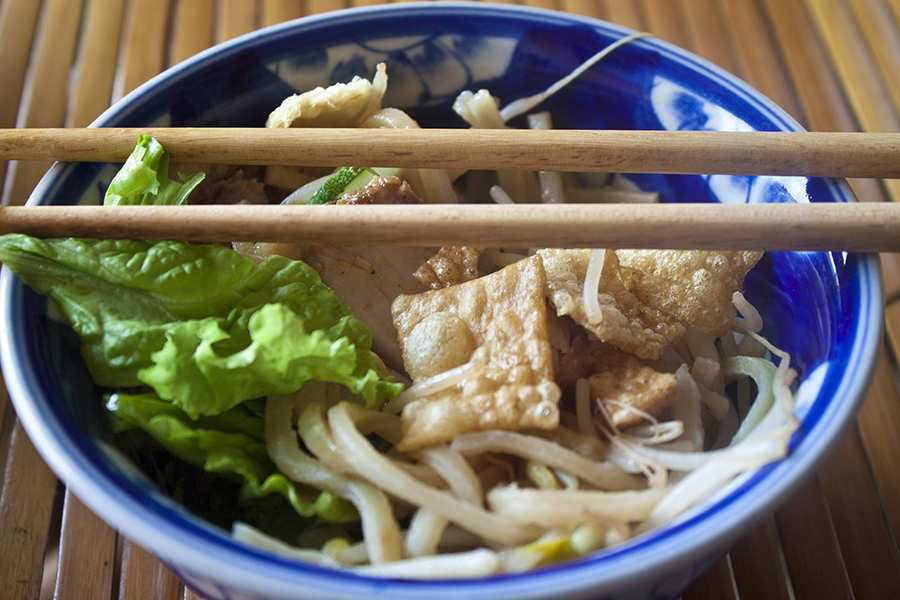
Hoi An offers many great places to stay. This Airbnb Superhost books out a Japanese-style wooden bungalow ($89) on the edge of Ancient Town that comes with bicycles, an outdoor jacuzzi and airport transfers. This charming riverside cottage, also run by a Superhost, comes with bikes and breakfast included, $70. If you’re on the coast, this beach hotel is $40. Or a stylish holiday house with plunge pool, $100. The boutique An Villa is a lush compound of studios and villas for less than $100.
Coast & Islands
Hoi An is part of the Cu Lao Cham-Hoi An Biosphere Reserve — the Cham Islands, named for the 7th to 10th century Cham Dynasty — located 15 km off shore in a protected marine reserve. Speedboats take 20 minutes, leaving from Hoi An in the morning and returning mid-afternoon. There are eight little islands and Hon Lao is the largest and only inhabited one. Also known as Monkey Island for the more than 1,200 who live there, there are two villages — the main port of Bai Lang, which is more developed and where most of the restaurants are located, and Bai Huong, a little fishing village with less than 500 residents, 5 km down the coastal road. Scooters are super cheap, and you’ll need one if you want to zip around the island’s eight beaches. Stop by the Tan Hiep Market, it’s full of fresh-caught seafood. There are no hotels, just small guesthouses and the island’s homestay program, which costs less than $20 a night. If you don’t mind simple lodging, book a room in the quieter fishing village and stay a few nights. You can explore the surrounding islands and, once the day-trippers leave on the 3:00 p.m. boat (and before they arrive around 10:00 a.m.), the beaches are deserted. March to August is the best time to visit, when the sea is calm and clear.
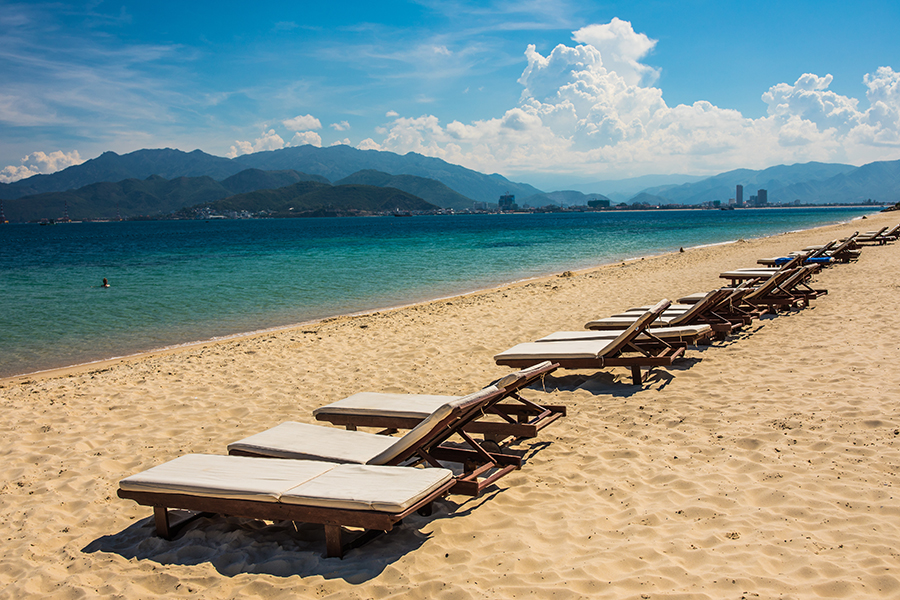
If you like something a little higher end, a 1.5 hour flight takes you to Ho Chi Minh (Saigon), from where you can catch a 50-minute plane to the Con Dao Islands where you’ll find higher-end hotels, including a Six Senses, on a more developed island surrounded by uninhabited ones. If you’re into a large, full-service luxury resort, check into The Secret Con Dao on the edge of the island’s main town where you can score a luxury suite for $100. Con Dao House costs $55 for a smaller, more boutique-like experience a few streets back from the beach. At the Orson Hotel & Resort ($120) the design isn’t as sophisticated as The Secret — but it’s the only hotel on a beautiful private cove.
If You Go:
Exchange Rate: C$1 = 17,585 VDN (Vietnamese Dong)
Cold Beer (domestic): C$1.40
Cappuccino: C$2.70
Inexpensive Delicious Meal (one dish): C$2.85
Tuk-tuk or Taxi per 3 km: C$2.60
Lovely Budget-Friendly Hotel: from C$30 a night
When to Go:
NORTH/ HANOI
Summer (May to October) averages 28 C to 35 C, is hottest and includes the rainiest months. Winter (January to March) can be surprisingly chilly, as low as 15 C. Autumn (September to November) and spring (March and April), when the climate is dry and milder, are the most popular times to visit northern Vietnam
SOUTH/HOI AN & COAST
The weather in the south is tropical. Hot year-round with a daytime average of 30 C, and two seasons: dry (November to April) and rainy (May to October). You’ll get better accommodation deals and less-crowded cultural sites by avoiding peak visiting months. Bear in mind that visiting at the beginning or end of the rainy season often just means a big afternoon thunderstorm that alleviates the heat (and is quite welcome), not rain for days on end.
*Prices and exchange rates are accurate at time of writing
RELATED:
Affordable Asia: The Many Charms and Must-See Sites of Cambodia
Asian Adventures on a Budget: Must-See Sites and Stays of Thailand